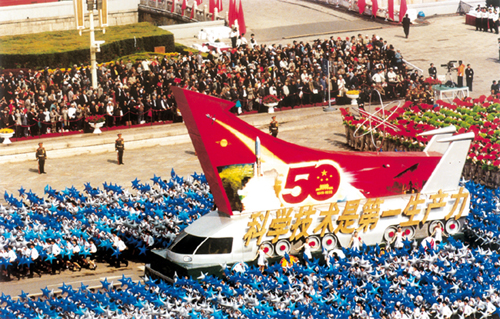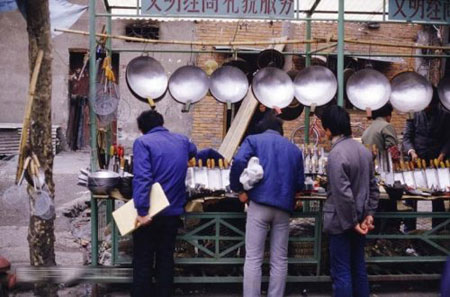7. 1988: Science and technology are defined as the primary productive force
 |
In the late 1980s, the point of view that "science and technology are the primary productive force" became popular across the country. |
On September 5, 1988, Deng Xiaoping put forward his point of view that "science and technology are the primary productive force" while he was meeting with Czechoslovakia President Gustav Husak.
On March 13, 1985, the CPC Central Committee made the Decision on Science and Technology System Reform, pointing out that modern science and technology are the most active and decisive factors needed for new social productivity. The CPC must attach great importance and give full play to the roles of science and technology. Meanwhile, the Decision outlined the primary tasks of the science and technology system reform.
From a general perspective, the Decision established policies of rejuvenating the economy through science and technology, promoting the commercialization of sci-tech results and exploiting technological market. It promoted the transformation of sci-tech results to real productivity and the industrialization of high and new technologies, unveiling the curtain of all-around sci-tech system reform since the "Cultural Revolution (1966-1976)".
8. 1992: Setting up the goal of establishing a socialist market economy
From October 12 to 18, 1992, the 14th National Congress of the CPC was held in Beijing. Jiang Zemin made a report entitled Accelerating the Reform, the Opening to the Outside World and the Drive for Modernization, So As to Achieve Greater Successes in Building Socialism with Chinese Characteristics.
 |
People engaged in private business used to be called Daoye, or speculator. This term is rarely heard today. |
The report acknowledged the substantial achievements made in reforming and opening-up as well as in the modernization drive since the end of 1978, systematically summarized the practices and experiences over the previous 14 years, made a brilliant exposition of Deng Xiaoping Theory of building socialism with Chinese characteristics, and outlined the major tasks in the reform and economic and social development in the 1990s. It declared that the target of China's economic restructuring was to establish a socialist market economic system.
The Congress passed an Amendment into the CPC Constitution. The theory of building up socialism with Chinese characteristics and the Party's basic line were written into the CPC Constitution. For the first time in its history the Party clearly put forward a goal of building up a socialist market economy system.
9. 1993: Setting up a modern enterprise system
From November 11 to 14, 1993, the Third Plenary Session of the 14th CPC Central Committee was held in Beijing. The Session passed the Decision of the CPC Central Committee on Several Questions Concerning Setting up the Socialist Market Economic System.
The meeting pointed out that setting up the socialist market economic system would allow the market to play a fundamental role in resources distribution under the government's macro control. China should further transform the operation system of state-owed enterprises and set up a modern enterprise system under scientific management, which could adapt to the requirements of the market economy, with clear definition regarding power and duty, separating government functions from enterprise management.
10. 1993: Adopting a revenue-sharing system
On December 15, 1993, the State Council made a decision to reform the country's fiscal management and implement a revenue-sharing system. The reform began to be carried out in 1994.
In 1995, China began to reform its inter-government fiscal transfer system, gradually building up a more standard transfer payment system among governments. The year 2002 witnessed the reform on income tax sharing system. With all these efforts, a fiscal management framework which meets the requirements of the socialist market economy began to take shape in China.